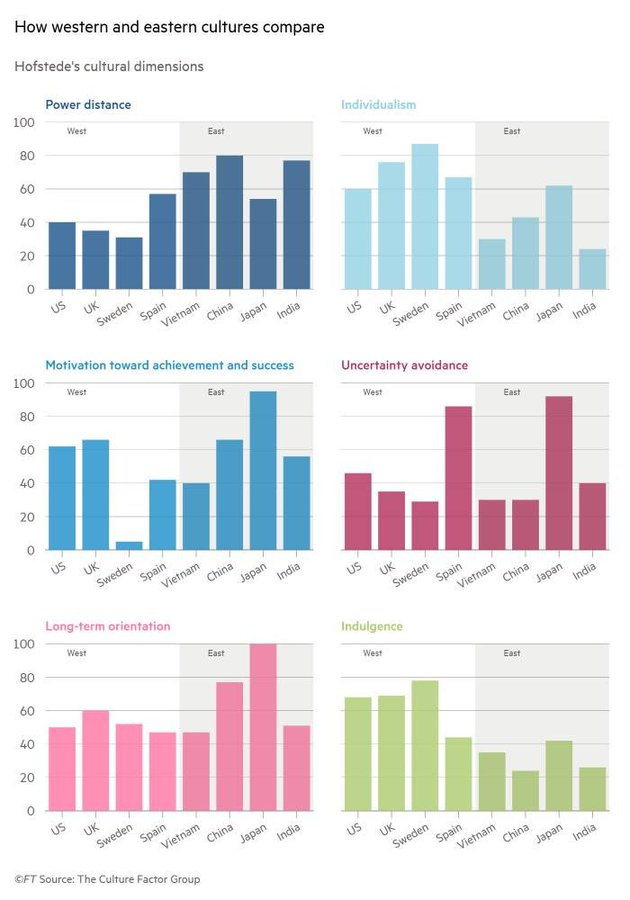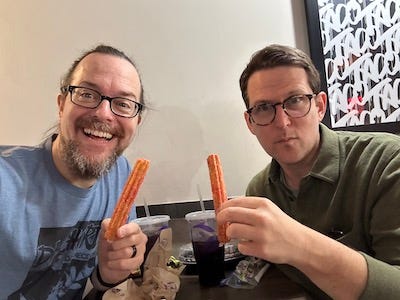Dear Friends,
I’m writing from New York, where we have just enjoyed what many derisively call “Fake Spring, Pt. 1” – the first bout of decent weather that lets us believe the worst of winter might be over. Then windy, sub-freezing temperatures return. We hope, we tenuously believe, and then we resign ourselves to misery when the cold comes back again and again.
Fake spring is on the mind because I’m cold as nuts today and, man, what a tidy little metaphor for our times. No matter what you believe, you’ve likely felt the dizzy of how we seem to lurch from extreme to extreme or backlash to backlash or false hope to false hope. There’s an emerging theory about how internet and social media behaviors naturally influence an anti-incumbency, which is to say a resistance to whatever is going on right now.
I like this idea, in part because it makes sense to me and because it dovetails nicely with the idea that if we just spend more of our lives offline, we can begin to defang the beast. This, like fake spring, is my sweet naive hope.
First Crunch
Tej Parikh at The Financial Times put together a genuinely fascinating look at how different national cultures inform business practices in countries around the world. DON’T FALL ASLEEP YET. Hello! Are you with me? To do this, he looked at some of the ways that countries tend to stand out from one another, using data and theory about existing norms and institutions to explain the differences.
For example, held against our peers, America’s business culture could be defined by a risk-taking, work-hard/play-hard ethos that bristles at the perception that elites have all the answers1:
Parikh also chose four different writers (dare I say, experts???) to discuss the reigning working culture in their respective countries – China, India, the U.S., and Sweden. And, for the United States, he kindly asked me to write about how we stand out and why we are the way we are.
To sum it all up, I chose hustle culture, which I argue is a uniquely American concept that relies on us working very hard because if we don’t, there is – by both design and cultural imperative – really no safety net to catch us. Here’s a bit of what I wrote, edited of its characteristic mania by a smart editor. But like I said, the whole feature is worth your time:
Hustle initially moved beyond its [original] connotations – grit and hard work – to embody a scheme or a sleight of hand. This version of hustle identified a way to survive, implicitly against the long odds imposed by external forces like oppression and economic exclusion.
As financial precarity has subsumed more would-be strivers, this interpretation of hustle has been more widely adopted. The hustle now appears as a call to be resilient or self-reliant; as a commodity that fetishises overwork and infuses it with good cheer; as a cultural guideline that connects long hours with the need to play hard or indulge in high-priced self-care.
Second Crunch
On a related and newsworthy note, our heavily individualistic ways also manifest in a resistance to government. We are now seeing that play out with Elon Musk’s DOGE campaign, which effectively grants the private sector (the businessmen and oligarchs we broadly lionize) even more power and footing than they already have.
For TIME, I wrote about what this assault on the public sector says about the role that the private sector is meant to play in our lives:
Investments in people and projects that promote interdependence, public trust and public safety, and social cohesion are exactly what the U.S. needs more of at this highly atomized, lonely moment. While reporting on how America’s work culture has degraded its communities, I spoke with General Stanley McChrystal, former leader of the Joint Special Operations Command (JSOC) who sounded a similar alarm. “The idea of community as being this knitted-together entity to which we all have responsibility and from which we all derive benefit has been weakened,” he warned. It’s little surprise, then, that McChrystal now spends much of his private life advocating for the adoption of a national service standard in the U.S., which would help repair America’s historic dissatisfaction with democracy and partisan clustering caused by growing social and economic dislocation.
In other words, it’s the values that don’t appear on quarterly reports or the transcripts of earnings calls that will save us. But in the transactional world of Trump, Musk, and DOGE, the concept of career civil servants taking lower-paying, apolitical work to serve an intangible greater good is naive at best. The problem is that the DOGE outlook also fails to account for all the ways in which an overreliance on the private sector has already weakened American life in very tangible ways. Excessive deference toward the private sector helps explain why Americans rely on Starbucks bathrooms instead of public ones, why Americans spend twice as much as its peer nations on healthcare spending for poorer outcomes, and why wealthy homeowners hired private firefighters to save their property during the Los Angeles fires earlier this January.
Catch Me
If you’re not sick of me yet, which would be impressive because, frankly, I’m sick of me, I have another round of live events, including some virtual ones ahead that I’m looking forward to.
Here is the link to register for my free(!) virtual event on Wednesday with the one and only Kathy Gilsinan, who is a dear friend of The Crunch and someone who has been calling me on my bullshit for about a decade now!
For a more intense experience, I will be delivering a seminar(!) for Smithsonian about the book and work culture next month. Register here!
Snack Break
Sincere apologies to everyone who thought this newsletter would be mac and cheese with vegetables snuck in, instead of vegetables with mac and cheese snuck in. I’m sorry, okay? I’m not ready to give up on trying to make sense of things just yet.
Still, last week, I had the very special professional pleasure of having a Taco Bell lunch with Jason Liebig, my History Channel pal who is, without a doubt, the nation’s foremost expert on candy and Hollywood’s favorite candy archivist.
I can’t begin to express how much this man knows about the American appetite and the role of sweets in defining and destroying us. Jason met me on a joint mission to try out Taco Bell’s newest limited-time churro offering (a phrase that can only inspire awe). The new churro is a collaboration with Milk Bar, the fast-expanding bakery founded in the East Village by James Beard-winning pastry chef Christina Tosi.
The Milk Bar Churro is your normal Taco Bell churro, but stuffed with Milk Bar birthday cake frosting and topped with sprinkles. At 280 calories per churro, it is a much louder up-yours to cardiologists everywhere than the normal 170 calorie standard-bearer.
Verdict: This is a genius collaboration because people who love Milk Bar tend not to be people who like Taco Bell and people who like Taco Bell tend not to know what the hell Milk Bar is.
In this way, the partnership was a winner EVEN BEFORE the churros came out of the fryer. The actual taste of the churros, lemme just say, are genre-breaking, stoner manna from corporate heaven. I had one after a Nachos Bell Grande, crunchy taco, and 32-oz Pepsi One and was still ready to fight someone not wearing headphones on the subway. Most Taco Bells are already sold out of them so consult your local app for availability.
That’s it for this Crunchwrap! Thanks as always for reading! I welcome your questions, comments, demands for more high-calorie investigations. Otherwise, I’m looking forward to seeing you out there, folks.
With love,
Adam
Even as it effectively hands them the power to make decisions ¯\_(ツ)_/¯







